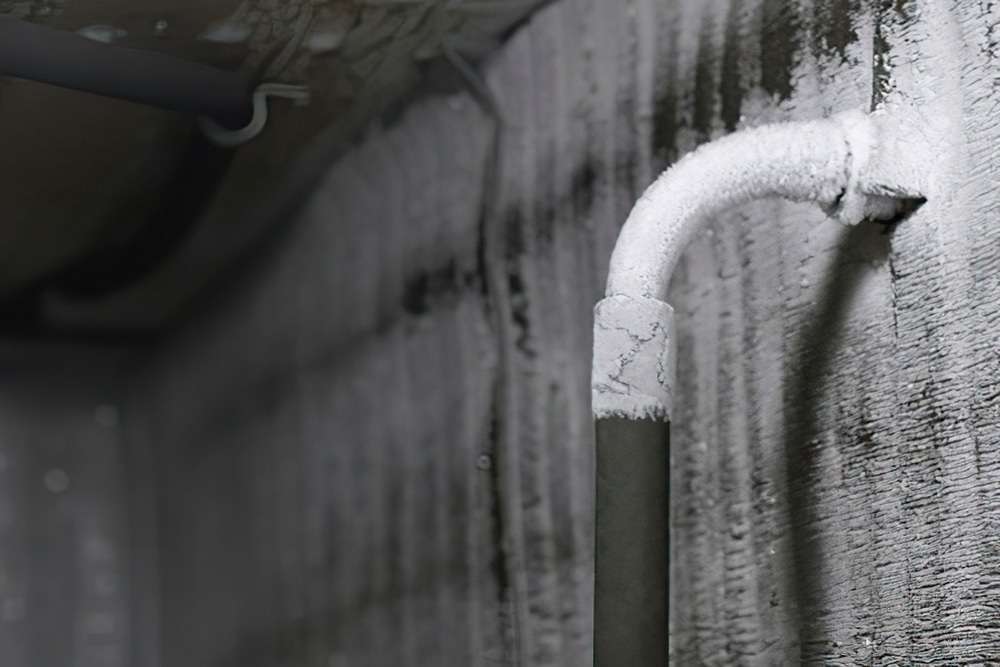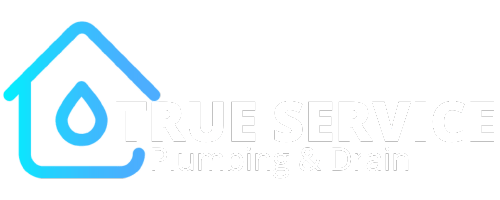If you’re a homeowner facing the chilling reality of a frozen pipe, you might be wondering what to do if your pipes freeze.
Understanding the steps to take when pipes freeze is crucial to prevent potential damage and avoid costly repairs.
This guide will provide you with actionable advice on dealing with frozen pipes, from recognizing the signs to thawing them safely and preventing future occurrences.
How To Tell If You Have Frozen Pipes
There are a few ways to tell if you have frozen pipes. An early sign of a frozen pipe is little to no water pressure coming from plumbing fixtures on a cold winter day.
If you turn a faucet on and see little trickles of water, chances are one of the pipes supplying water to that fixture have frozen. To find the location of the frozen pipe, turn on all fixtures to narrow down the culprit. This method will determine which of the supply pipes have frozen.
If all the fixtures in your home have little to no water pressure, the frozen piping may be close to the water main.
Another sign you have frozen pipes is the emergence of wet spots or leakage. This likely indicates that a pipe has frozen and burst.
Water will eventually thaw and begin to leak out. Seeing wet spots or other signs of water leakage means the burst pipe is near. Water will often leak anywhere close to the pipe rupture.
Locating Frozen Pipes
To find the location of a frozen pipe, consider places in your house that are the coldest. Piping in unheated areas such as basements and crawl spaces, attics, garages, vanity/kitchen cabinets are more likely to freeze during intense temperature drops.
Piping which runs along exterior walls that have no insulation are also susceptible to freezing.
Check these pipes at these locations first. They will be the piping in your plumbing system most likely to freeze first.
If you are unable to find the frozen pipe, then it is likely behind a wall. Contact a licensed plumber to help you search. They have the right equipment, experience, and knowledge of home plumbing systems to properly do this.
Piping running through walls will be difficult to access. Attempting to access them by yourself can be dangerous.
Thawing Frozen Pipes
Once you know the location of the frozen pipe, thawing the pipe will be the next step. Before doing this, be sure you are comfortable performing DIY fixes.
Otherwise call a plumber to help thaw your pipes. Especially if you are unable to safely thaw the pipes yourself.
First, shut off your water from the main water line. This will prevent any leakage in the event a pipe has burst. Even if you do not find any visible leaks, best to shut off the water to be safe.
Turn on the plumbing fixtures of the frozen pipe that supplies its water. This will relieve the pressure built up in the pipe. As the water begins to thaw, it will need someplace to go. By leaving the fixture on, this will give the water a way to drain.
Do not use a blowtorch or any sort of open flame device to thaw your piping. Also do not use a kerosene or propane heater. Last thing you want to do is damage to your piping. Or yet worse, start a fire within your home.
For exposed piping that is easily accessible, use an external heat source to thaw. This can be a hairdryer, heatlap, or rags soaked with hot water. These are some options you can use. If you are using a space heater, do not leave it unattended.
With frozen pipes running inside interior walls, you have several options. Turn up your thermostat to around 80°F ( 26.7°C). Allow for several hours for the pipe to begin thawing out.
Use an infrared heat lamp closest wall to the frozen pipe. If need be, remove the section of drywall or ceiling covering the frozen piping. Apply the thawing methods for exposed piping.
Keep heating the pipe until water pressure returns to normal. Continue to check plumbing fixtures, as multiple pipes may have frozen.
Helpful Tips For Prevention
To prevent your pipes from freezing during the winter, it is important to prepare them beforehand.
To start, check to see if your piping has enough insulation. You can buy pipe insulation & fittings at your local hardware store. The insulation will create a barrier between the piping and surrounding cold air.
During severe drops in temperature, there are a few things you can do to prevent your pipes from freezing.
Keep the temperature of your home above a temperature range of 60°F to 68°F (15.56°C to 20°C). This will ensure the surrounding air within your home is warm enough to prevent freezing.
If your home has a garage with water pipes running through, be sure to keep the door shut. Add insulation to the door to keep the temperature warm. Insulate any piping. During severe temperature drops, use an electric heater to keep temperatures stable.
Open vanity cabinets found in your bathroom or kitchen. This will allow warm air to circulate better around piping found at these locations.
Lastly, during cold weather, leave your faucets slightly on. Allow them to drip to prevent sitting water from freezing.
Frozen Pipe Repair With True Service Plumbing
If you’re currently experiencing a plumbing emergency or a situation requiring expert advice, call our professionals at True Service Plumbing.
We are available 24/7 to take your call and respond to emergencies as quickly as possible.
Our licensed plumbers will assess your home’s plumbing system and determine the root cause of your issue, and perform the services necessary to get your plumbing up and running again.
From burst and frozen pipes, pipe & drain repair, basement flooding and more – True Service Plumbing has your back when it comes to all things plumbing.


